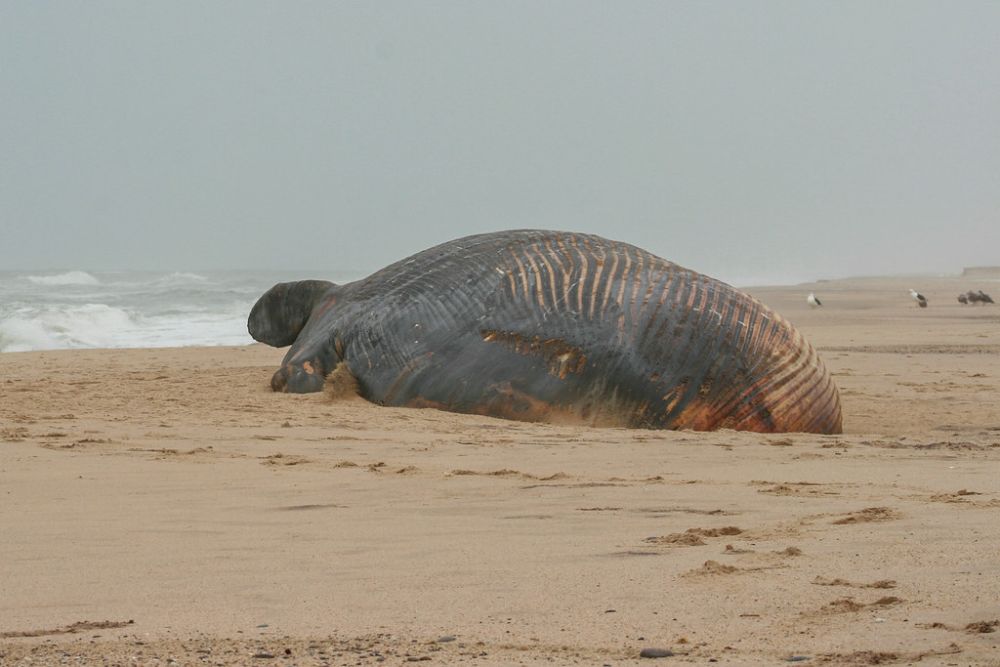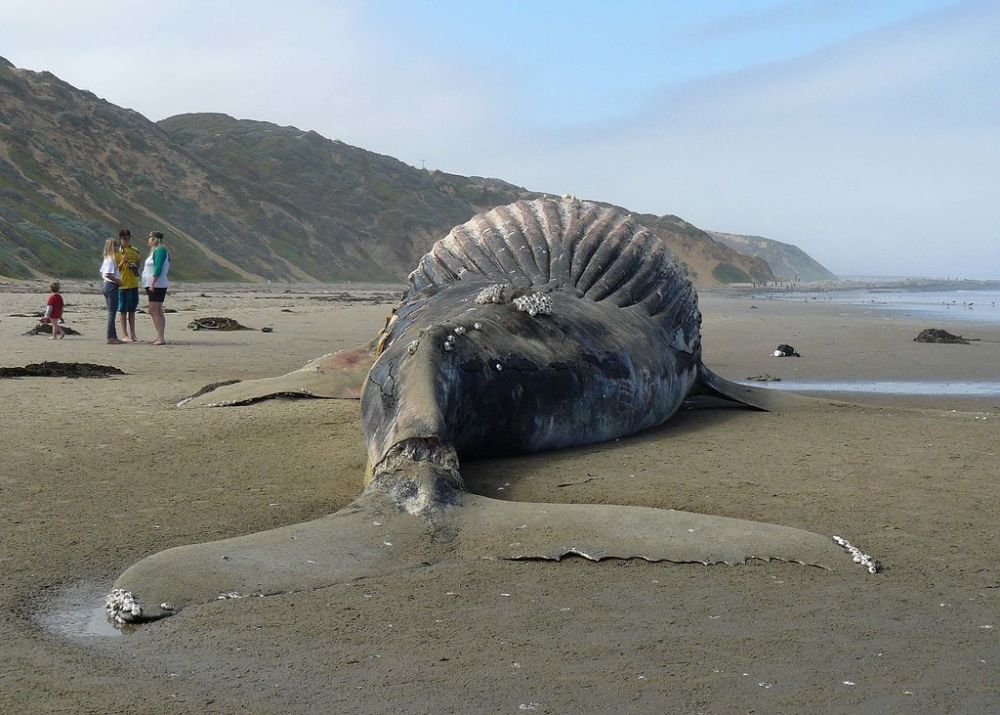The largest creatures on earth have a tendency to blow up when washed ashore, which can be rather nasty.

A bloated whale washed ashore in Namibia. Image credits: Free pictures for conservation / CCsearch, CC BY-NC-SA 2.0
This video of an exploding whale was captured in the Faroe Islands back in 2013. As a marine biologist started cutting into the whale which was dead for about 2 days, a vicious explosion erupted from the remains, spraying blood and guts, nearly injuring the biologist. The blast was so powerful that the flensing knife was ripped from his hands and stood in the wall of the house across from the flensing plane.
The video contains graphic footage.
Most often when a whale dies, it sinks to the bottom of the ocean where it becomes a bountiful source of food for scavenging marine animals and its bones can provide shelter for countless other species. This process of feeding and decomposition can last for decades and is almost as ecologically important as the whale’s life cycle. In some other instances though, a whale’s death can be way less elegant. When these massive mammals are washed ashore by waves, their bodies decompose and gases build up in the stomach and other interior organs. Since whales have very thick and hard skin, these gases usually cannot escape and they make the beached animals bloated.
As time goes by, the gas will release itself eventually through slow decomposition, but every once in a while, the built-up gas blows out of the body through a weak point on the skin. These points are often ones that are already in place, such as a whale’s mouth, but sharks and even humans can contribute to the creation of such weak spots.
Whenever a whale is washed ashore, it will surely attract many bystanders and some may feel an irresistible urge to poke the carcass with a stick or even to stand on the dead whale. These may also trigger it to unleash an insane amount of gas, and other unpleasant viscera at a speed of up to 70 km/h (43 mph). According to Bruce Mate, director of the Marine Mammal Institute at Oregon State University, there have been people who have stood on top of these animals and have been blown into the air, as the result of the explosion.

Beached whales can be extremely dangerous. Image credits: docentjoyce/CCsearch, CC BY 2.0
Therefore, marine biologists consider beached whales a serious safety hazard and they usually start reducing the pressure in the deceased animals as soon as possible – they make a small incision on the belly of the whale, allowing the gas to slowly leave the carcass, preventing the explosion. But sometimes, as seen on the video, the incision is way too deep, causing the animal to explode. Careless cutting and poking of the whale, however, can lead to an even bigger outburst.
An incident in Taiwan, which happened back in 2004, is a perfect example of what could go wrong with a dead whale if not handled properly. A 60-ton sperm whale died on a beach in Taiwan and researchers wanted to perform an autopsy on the carcass for educational purposes. 50 workers were called in to transport the whale to the National Cheng Kung University. Because of the whale’s size, it took 13 hours and three large lifting cranes to get the mammal loaded on a flatbed truck for its final trip. As the dead whale was being towed through the streets of Tainan, it suddenly exploded on the back of the truck, splattering blood and guts on cars, shops, and a few unfortunate people. Although enough of the whale remained to allow for an examination, the residents of Tainan had to learn a lesson in whale biology the hard way.
The most famous and maybe the oddest incident of an exploding whale happened in 1970 when a whale washed up on the shores of Oregon, and the local government was unsure of what to do with the carcass. Ultimately, they decided that the best way to get rid of it is to blow it up into little pieces with half a ton of dynamite. The hope was that seagulls and other scavengers would take care of the remaining bits. In fact, the explosion sent huge pieces of whale chunks hundreds of meters high in the air, smashing cars and falling into backyards. It had not only scared seagulls away, but left behind chunks that were way too big for any scavenger to eat. Nonetheless, most of the whale carcass remained intact sitting on the beach, so the cleanup crew had to remove it themselves over the course of the next few days.

A breaching humpback whale. Image credits: Gregory ‘Slobirdr’ Smith/CCsearch, CC BY-SA 2.0
So, if you think that admiring from a safe distance is still not the best idea when coming across a dead whale, you should know that the smell of a decomposing whale is described to be one of the worst smells in the world. Moreover, the odour can last pretty long if you get sprayed with the rotten, liquid tissues. Scientists reported that some tools used for cutting open a dead whale still reeked of the carcass 10 years after the job was done.

